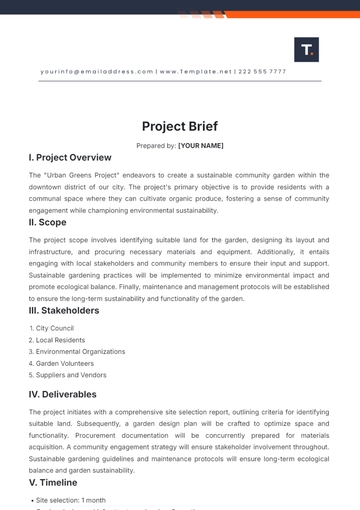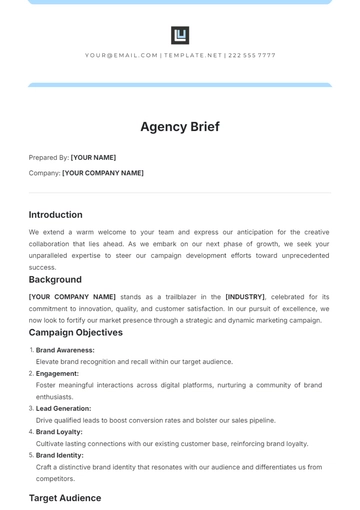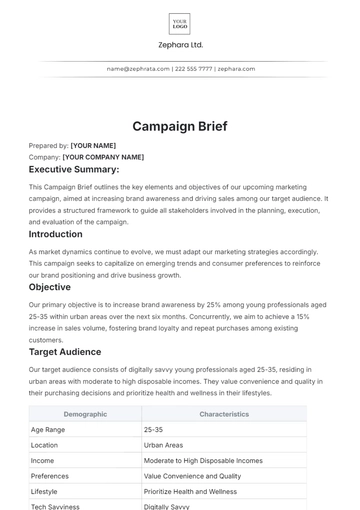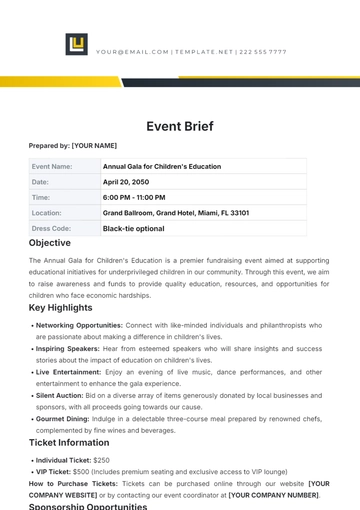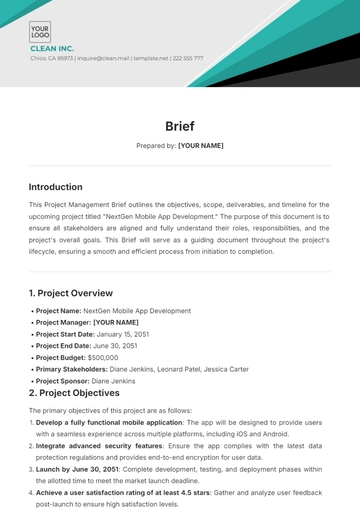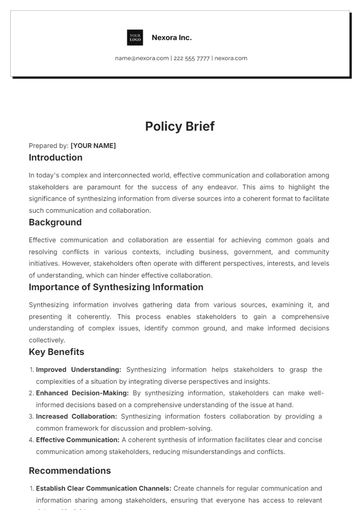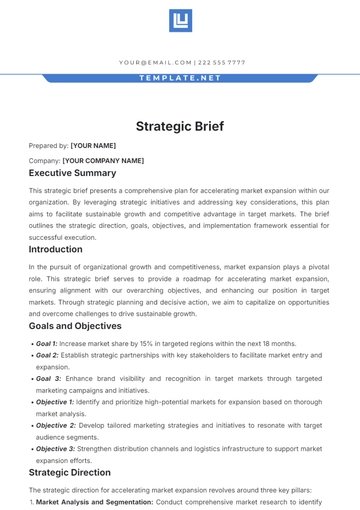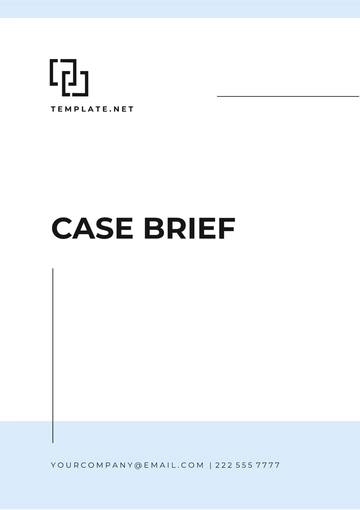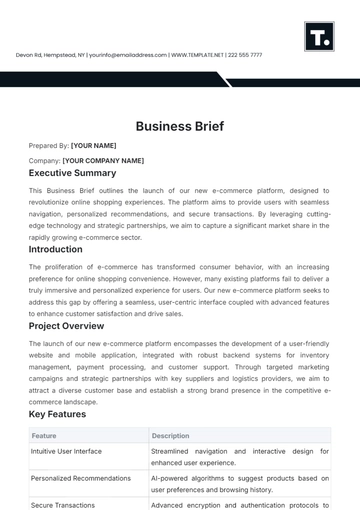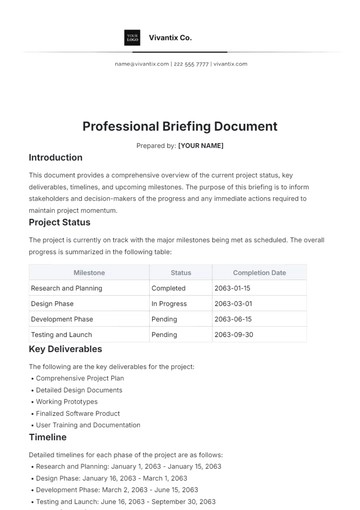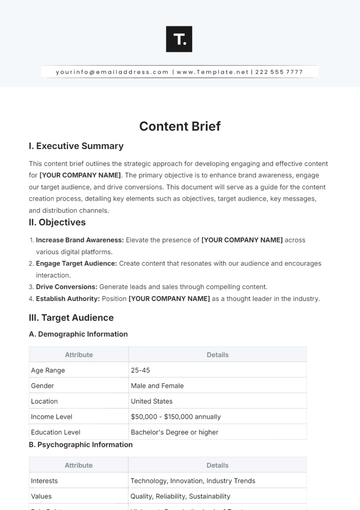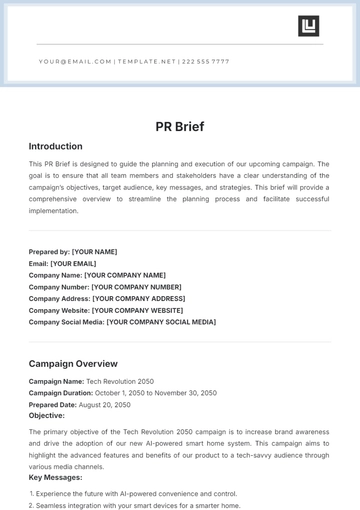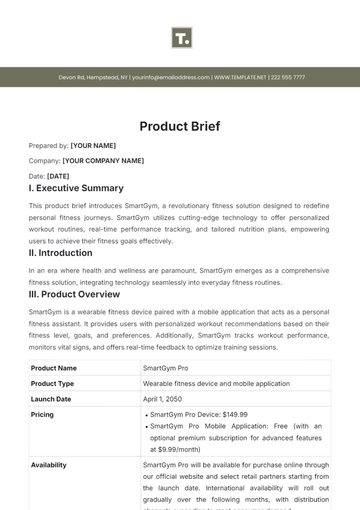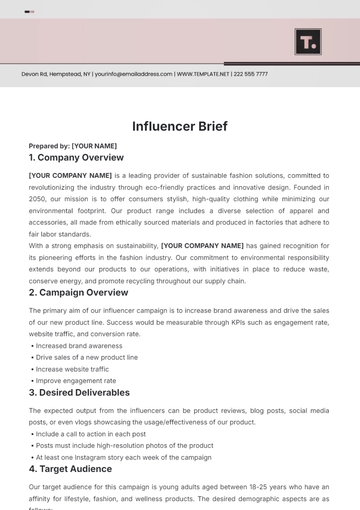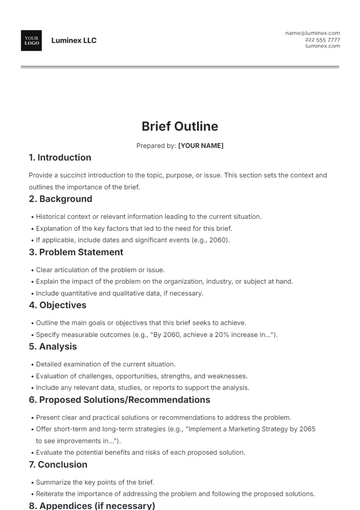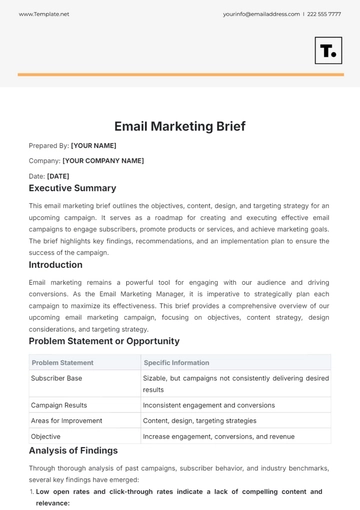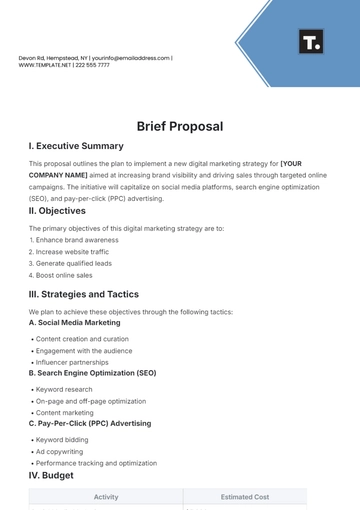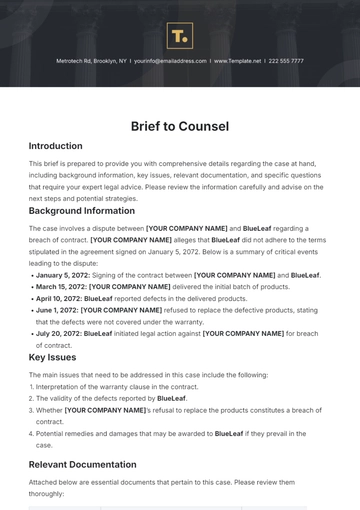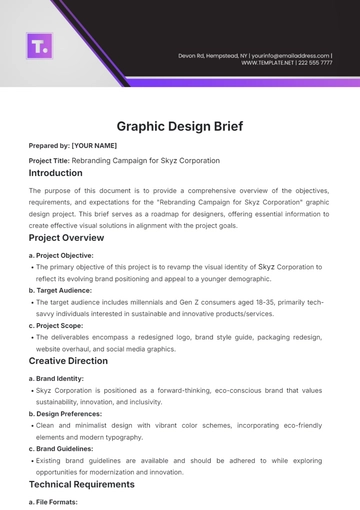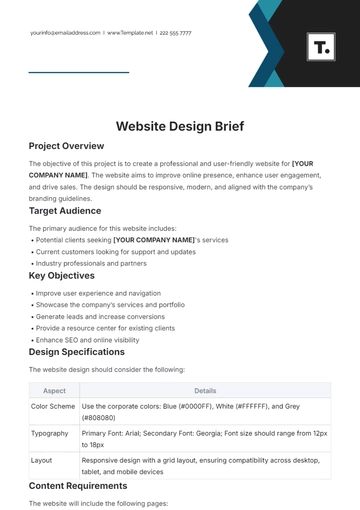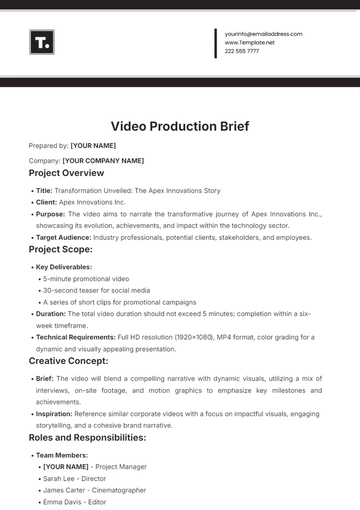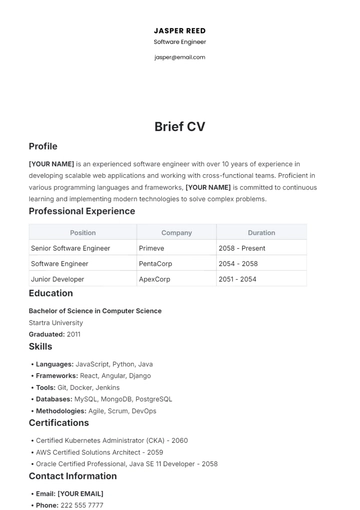Free Evidence Brief
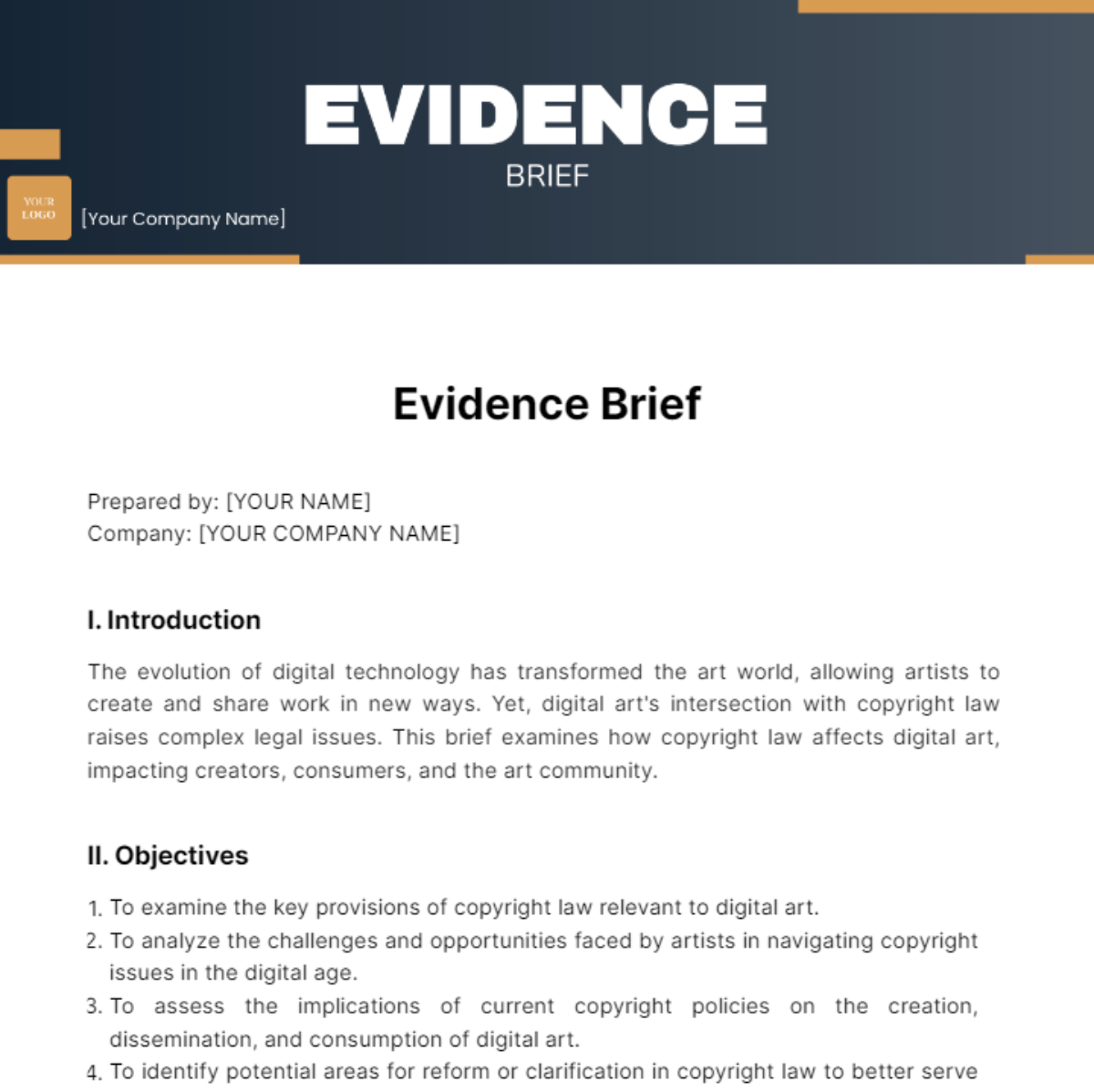
Prepared by: [YOUR NAME]
Company: [YOUR COMPANY NAME]
I. Introduction
The evolution of digital technology has transformed the art world, allowing artists to create and share work in new ways. Yet, digital art's intersection with copyright law raises complex legal issues. This brief examines how copyright law affects digital art, impacting creators, consumers, and the art community.
II. Objectives
To examine the key provisions of copyright law relevant to digital art.
To analyze the challenges and opportunities faced by artists in navigating copyright issues in the digital age.
To assess the implications of current copyright policies on the creation, dissemination, and consumption of digital art.
To identify potential areas for reform or clarification in copyright law to better serve the needs of digital artists and the public.
III. Methods
Conducted a comprehensive review of scholarly articles, legal documents, and industry reports related to copyright law and digital art.
Analyzed case studies and real-world examples to illustrate the application of copyright principles in digital art contexts.
Consulted with legal experts and practitioners specializing in intellectual property law to gain insights into emerging trends and challenges.
IV. Key Findings
Copyright law protects digital artists' original works across various mediums, including visual art, music, literature, and multimedia creations.
"Fair use" allows digital artists transformative uses of copyrighted material but raises questions about usage boundaries.
Digital rights management (DRM) technologies enable artists to control distribution but may limit consumer access and creativity.
Legal uncertainties in online marketplaces challenge artists to monetize their digital creations.
Blockchain-based solutions offer promise for transparent copyright management in digital art.
V. Implications
Clarifying copyright law for digital art fosters innovation while protecting artists' rights.
Balancing copyright holders' interests with public access is crucial for a thriving digital art community.
Policymakers should reform copyright law to address digital art's unique challenges like licensing and enforcement.
VI. Strengths and Limitations
STRENGTHS | LIMITATIONS |
|---|---|
|
|
|
|
|
|
VII. Conclusion
In conclusion, the intersection of copyright law and digital art presents both opportunities and challenges. By addressing these complexities, we can foster a more equitable environment for creativity and innovation. This evidence brief emphasizes the need for ongoing dialogue and collaboration among stakeholders to ensure that copyright law effectively balances the interests of rights holders and the public in the digital era.
- 100% Customizable, free editor
- Access 1 Million+ Templates, photo’s & graphics
- Download or share as a template
- Click and replace photos, graphics, text, backgrounds
- Resize, crop, AI write & more
- Access advanced editor
Present compelling arguments with our Evidence Brief Template from Template.net. Ideal for legal professionals and researchers, it's fully editable and customizable to suit various contexts. Organize evidence systematically and persuasively. Editable in our Ai Editor Tool, it enhances efficiency and accuracy in constructing convincing arguments, whether for court cases or academic pursuits.


